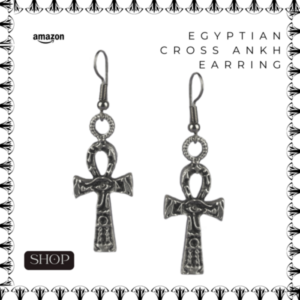From the temples of ancient Egypt to the pyramids of South America, the use of scent and incense in rituals has been a long-standing tradition throughout human history. But why did these ancient civilizations bother with all these smelly shenanigans? Well, let’s explore the fascinating world of fragrance and find out the first known psychic perfume in history.
Power Of Scent In Rituals
First off, let’s talk about the obvious: nobody wants to be around a stinky temple or pyramid. Can you imagine trying to pray to the gods with a nose full of BO? No thank you. So, ancient peoples used various herbs and resins to create pleasant and soothing aromas to help purify the air and mask any unpleasant odors. This way, they could focus on their religious practices without being distracted by the funk. They were right, today we use the power of scent in rituals too.
Many ancient civilizations used herbs and resins in their incense blends which were known for their healing properties. But the scent wasn’t just about that – it was also believed to have spiritual and magical properties. Different scents were associated with different deities and were believed to have the power to summon or appease them. For example, frankincense was associated with the god Ra in ancient Egypt and was used to honor him and seek his favor. In any case, the ancient Egyptians were far ahead of their time in spiritual scents, as they were in many other matters. Like Kyphi, the divine smell of Egyptian temples.
What Is Kyphi?
Kyphi is the most important perfume whose knowledge has been transferred from ancient times to the present. In this sense, it can be called the first known perfume. It helps priests to communicate with the gods and banish evil. So, how do we know that?
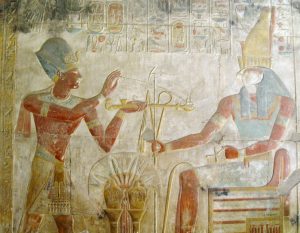
The Edfu Temple, built in Edfu, where the legendary war between the god Horis and Set took place, is one of the temples that has survived from ancient Egypt to the present day in the best conditions. It was built by the Macedonian Ptomelean Dynasty to make the hearts of the Egyptian priests. Priests are beginning to have doubts about how long the traditions and prescriptions they pass on to one another orally on papyri can withstand the wear and tear of time. Therefore, they begin to engrave the most important of this knowledge with hieroglyphs on the walls of the temple of Edfu. In this way, some very detailed recipes and content information can be accessed today. Kyphi’s recipe or formula is one of them.
Ingredients of Kyphi
The name of this fragrance is not Kyphi, it is “kpt” or “kopta”. Today, however, the Greek translation of kpt, that is, the word Kyphi, is used as a reference. This incense is used both in religious ceremonies and as medicine. Its use and formulation are mentioned not only in the Edfu temple but also in other sources. However, the formula in each source differs slightly from the other. We have a recipe of a Kyphi made with 10 ingredients, and also the one made with 36 ingredients. The main thing is that 16 items were counted in the formula in the Edfu temple and those written by Egyptian priests. So, quite reliable.
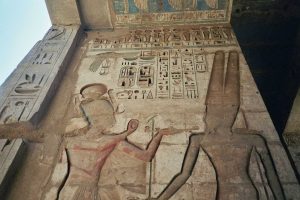
It is known that the Greeks showed interest in Egyptian medicines, so we can often come across Kyphi formulas in ancient Greek records. Kyphi is also present in Dioscorides’ famous Materia Medica, also in Galen‘s books. The formulas in both are different from each other, as you can guess.
How to Obtain Kyphi?
The recipe is located in the main hall of the Edfu Temple, on the walls of the area that was then used as a laboratory by the priests. Gum, amber, grass, mint and cinnamon are brought together in the specified order and this is called the base. This base is moistened with oasis wines and left overnight in a copper cauldron. Apart from this, sultani grapes are also added to the wine and added to the rest for a night. With this participation, it is rested for five more days and the excess wine is filtered.
Then, honey and frankincense (rankincense), which are mixed separately, are added to the base at a ratio of one to five and boiled. With boiling, the water evaporates and causes the honey to crystallize. After this solidified mixture is left to stand overnight, it is time for ground myrrh (myrrh or myrrh). After it is added, it is left until it dries completely. The resulting incense is what we call Kypi.
How Does Kyphi Smell Like?
Since it also contains honey, the scent of Kyphi can be described as sweet in general. Although the taste of smell is individual, the smell is described as “excellent” in all sources. It is even mentioned that when you smell a breath, you want to take deeper and longer breaths. The formula in Edfu temple exhibits a more sooty fragrance profile than the others. The reason for this is thought to be that honey is added by boiling, not as it is.
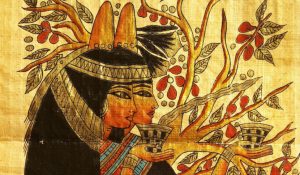
A Smell That Makes You High
Kyphi has another feature: When you smell Kyphi, it is said that a sweet sleep or drowsiness does surround you. Another frequently cited feature is that this sleepy state, causes you to see your dreams as sound rather than visual images. There are so many ingredients in the recipes. However, the common view is that some material names, whose meaning cannot be discovered or whose botanical identity cannot be reached today, refer to cannabis, that is, marijuana.
“What is marijuana doing there?” you can say. But, for example, in 1982 forensic toxicologist Dr. When Svelta Balabanova took tissue samples from some mummies, she found traces of cannabis, or marijuana, in them, none of which grew in Egypt. It even comes across traces of coca, the cocaine plant, and tobacco. If this claim, which has found a lot of supporters, is true, many Kyphi perfumes that are sold today as “made with the real original Kyphi formula” are not true. It is a fact that the original can never be reproduced or sold commercially, at least because of legal requirements.
Ancient Egypt and Culture of Perfume
In Egypt, scented substances had a meaning beyond being sacred. Kyphi was also a famous example that was used both as a necessary fragrance for peace in the second life after death and as a medicine while living. It was a medicine used in mystical rituals to talk to the gods as well as for sexual health.
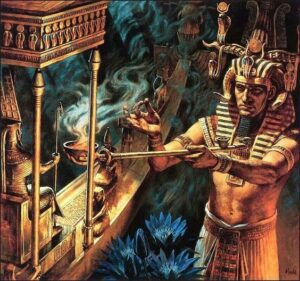
Iwan Bloch, in his book Odoratus Sexualis, says that in Ancient Egypt both men and women perfumed their genitals. They did this not to mask the smell of those regions, but to make those regions more prominent, at least in terms of smell, and even exaggerate their smell. Bloch continues, quoting the Renaissance physicist Prospero Albini, who spent three years researching medicine and pharmacy in Egypt: “Egyptian women lubricated their vaginas with amber and civet, thereby increasing their sexual pleasure. Just as women of other nations were fond of taking care of their faces and hair. Egyptian women also took care of their genitals.” We understand from Gene Bloch’s quote from Albini that Egyptian women used to roll that traditional Kyphi with their hands, roll it into a small ball, and then insert it into their vaginas.

